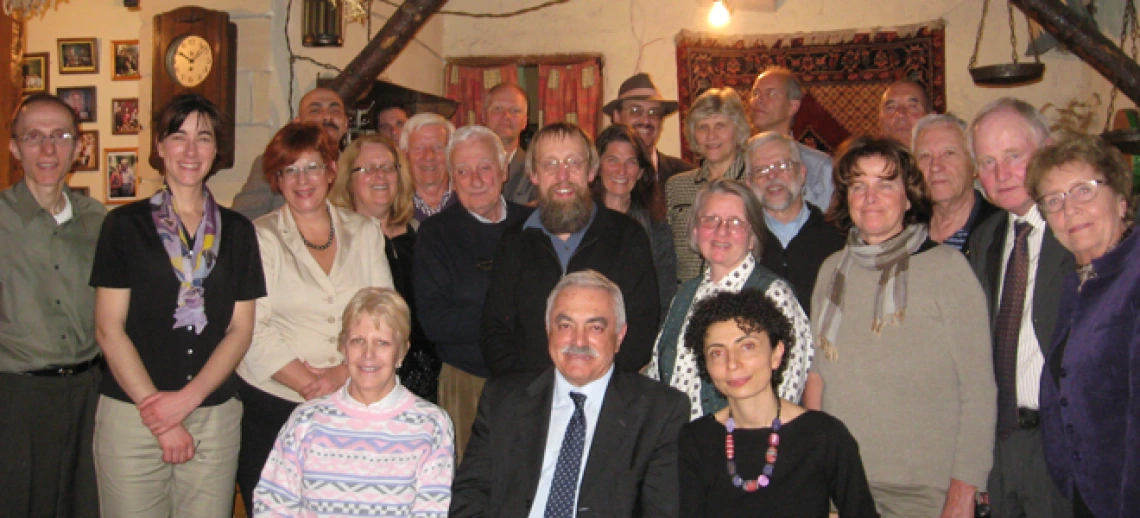UA SRP Director Raina Maier Attends Mining Symposium in Armenia

 Dr. Raina Maier, Director of the University of Arizona NIEHS Superfund Research Program (UA SRP), recently attended the International Scientific Symposium: Emerging Issues in Environmental and Occupational Health: Mining and Construction in Transition Economies in Yerevan, Armenia. The April, 2013 meeting was co-sponsored by the American University of Armenia, the Collegium Ramazzini, and NIEHS. The goal of this meeting was to raise awareness of health issues related to the mining industry in Armenia. Mining is an important component of the Armenian economy but there is increasing recognition of the impact of mining on human and environmental health. Although environmental regulations exist, they are not currently well-enforced. An extended press conference was held during the Symposium to bring some of these issues to the attention of the general population.
Dr. Raina Maier, Director of the University of Arizona NIEHS Superfund Research Program (UA SRP), recently attended the International Scientific Symposium: Emerging Issues in Environmental and Occupational Health: Mining and Construction in Transition Economies in Yerevan, Armenia. The April, 2013 meeting was co-sponsored by the American University of Armenia, the Collegium Ramazzini, and NIEHS. The goal of this meeting was to raise awareness of health issues related to the mining industry in Armenia. Mining is an important component of the Armenian economy but there is increasing recognition of the impact of mining on human and environmental health. Although environmental regulations exist, they are not currently well-enforced. An extended press conference was held during the Symposium to bring some of these issues to the attention of the general population.
 In her presentation, Dr. Maier first discussed the mission of the NIEHS Superfund Research Program in general. She continued by describing her research on phytoremediation of mining wastes and the development of informational materials on hazardous wastes which can be used to educate and inform affected communities. These technical aspects of her presentation were areas of importance to the audience at the American University of Armenia. Afterwards, three students approached Dr. Maier with interest in translating existing UA SRP informational materials into Armenian for use in local communities, including: “What are Mine Tailings?”; “What is Arsenic?”; and “What is Lead?”. A faculty member expressed interest in discussing how to initiate phytoremediation field trials at mining sites in Armenia. Future collaborations are in the planning stages.
In her presentation, Dr. Maier first discussed the mission of the NIEHS Superfund Research Program in general. She continued by describing her research on phytoremediation of mining wastes and the development of informational materials on hazardous wastes which can be used to educate and inform affected communities. These technical aspects of her presentation were areas of importance to the audience at the American University of Armenia. Afterwards, three students approached Dr. Maier with interest in translating existing UA SRP informational materials into Armenian for use in local communities, including: “What are Mine Tailings?”; “What is Arsenic?”; and “What is Lead?”. A faculty member expressed interest in discussing how to initiate phytoremediation field trials at mining sites in Armenia. Future collaborations are in the planning stages.
As part of her visit, Dr. Maier participated in a field trip to Akthala, Armenia to see a smelter in operation. Soil analysis prior to 2010 showed that metal (in particular lead) concentrations in soils around the smelter smokestack were extremely high. To reduce localized concentrations of lead, a pipeline was constructed in 2010 that runs up the steep slope of a hill next to the smelter allowing the smoke to be released at a much higher elevation (see photo at left). Soil measurements since 2010 show that while local lead concentrations in the air around the smelter may be lower now the elevated smokestack has resulted in further spread of lead throughout the valley.
Dr. Maier enjoyed her visit finding the both the Armenian people and the food incredible. “Armenia is a beautiful country and faces the same environmental challenges associated with mining that are found in other places of the world. I look forward to working with the American University of Armenia to begin to address those challenges.”

